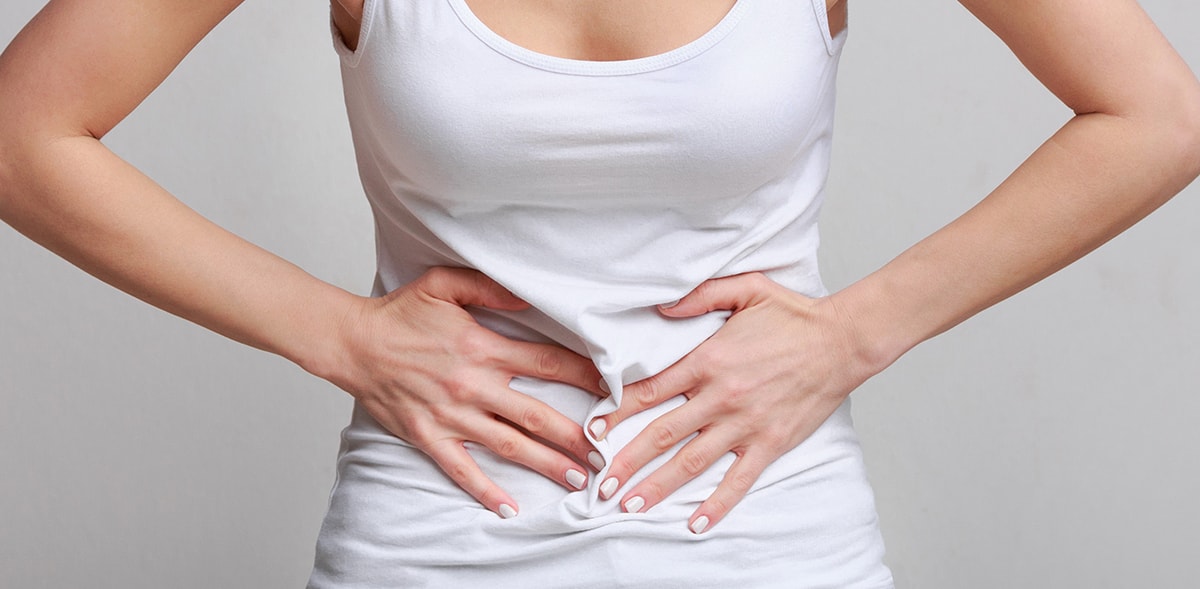We’ve all had headaches. Stress at work can cause headaches, our kids can cause headaches, and perhaps having too much wine on a Friday night can cause a headache. From mildly uncomfortable to extremely painful, headaches can be a huge pain in the butt. But migraines—well, migraines are something else altogether!
Migraines are often defined as a severe throbbing pain or a pulsing sensation, usually on just one side of the head, as well as nausea, vomiting, and extreme sensitivity to light and sound. These attacks can cause significant pain for hours—or even days—and can be so severe that the pain is disabling.
I have encountered so many people—including friends, family, and clients—who deal with these debilitating headaches that can last for several days and can really affect normal day-to-day life.
But it doesn’t have to be that way!
Most people are prescribed pharmaceutical medications to help relieve the symptoms, often without much relief or additional (and unwanted) symptoms. Rather than covering up the problem with meds though, I advise addressing the root issue: What is causing the migraines? That’s what needs to be resolved to keep the migraines from happening or, at the very least, keep the pain and discomfort to a minimum. So that’s what I want to share with you today!
These are some of the common causes of migraines—and what you can do to avoid them:
Celiac Disease (or Gluten Sensitivity)
Celiac Disease is an autoimmune disorder (where the immune system malfunctions and attacks the body’s tissues and organs) in which the immune system is abnormally sensitive to gluten – a protein found in wheat, rye, and barley. Inflammation resulting from immune system over-activity may cause a wide variety of signs and symptoms involving many parts of the body, including migraine headaches.
And even if you do not have Celiac Disease, you may have gluten sensitivity. Gluten sensitive people do not have the antibodies that are present in Celiac Disease, but they can still test positive for antibodies to gliadin, a protein found in gluten. Gluten sensitivity can also be a source of those painful headaches.
What You Can Do:
Avoid foods containing gluten, which is especially present in many processed foods; particularly try to avoid anything containing wheat, rye, barley, and oats. Try this for at least 3 weeks, and see if this is making a significant difference…then you’ll know this is a contributing factor. You can also ask your doctor to test for either of these conditions.
2) Thyroid Disease
Hypothyroidism is a condition in which your thyroid gland doesn’t produce enough of certain important hormones. The signs and symptoms of hypothyroidism vary, depending on the severity of the hormone deficiency.
The problems associated with the disease tend to develop slowly, often over a number of years—at first, you may barely notice the symptoms (fatigue and weight gain) of hypothyroidism, or you may simply attribute them to getting older. But as your metabolism continues to slow, you may develop more obvious signs and symptoms, including migraine headaches.
The causes for hypothyroidism can vary from autoimmune disorders to certain medications (those taken for psychiatric disorders) to an iodine deficiency, just to name a few.
What You Can Do:
If you suspect that you may have an issue with your thyroid, your doctor can take a blood test to check your level of the thyroid hormone, thyroxine. I suggest trying to make a few diet or lifestyle changes to improve thyroid function before committing to a lifelong drug (such as the often doctor-prescribed, synthetic thyroid hormone levothyroxine):
- Eat foods high in B-vitamins and iron, such as whole grains (if you don’t have an allergy), fresh vegetables, and sea vegetables.
- Eat foods high in B-vitamins and iron, such as whole grains (if you don’t have an allergy), fresh vegetables, and sea vegetables
- Avoid over-consuming (though not avoiding completely) foods that can potentially interfere with thyroid function, including broccoli, cabbage, brussels sprouts, cauliflower, kale, spinach, turnips, soybeans, peanuts, linseed, pine nuts, millet, cassava, and mustard greens
- Eat foods high in antioxidants, including fruits (such as blueberries, cherries, and tomatoes) and vegetables (such as squash and bell pepper)
- Avoid alcohol and tobacco
3) Processed Foods
We are bombarded with highly processed (or packaged) foods in America, many of which have caused a variety of issues including the loss of much-needed vitamins and minerals in our daily diets. Deficiencies of Magnesium, Vitamin D, and Vitamin B12 can all lead to migraines.
Processed foods can also have added chemicals such as nitrates (in cold cuts and lunch meat), artificial sweeteners (like Splenda), and Monosodium Glutamate (in soy sauce) that can trigger a neuro-chemical release in the brain that causes the onset of headaches.
What You Can Do:
Get tested for any vitamin or mineral deficiencies that may be present, then take a high-quality (and I stress, high-quality) supplements to get your levels back to healthy. Also, try to stick to a diet consisting of meats, fresh fruits, and vegetables—and avoid most things that you buy in a bag, can, or package. You know those food products with an ingredient list that seems a mile long (and you don’t recognize half of the words listed)? That’s a big red flag. Avoid those processed foods!
4) Food Triggers
Certain foods—such as cheese, wine, citrus fruit, chocolate, and alcohol—contain amines, or derivatives of ammonia, and research has shown that those suffering from migraines often don’t handle foods containing amines very well. Amines are more readily absorbed when fat is present, which may explain why chocolate and cheese are considered to be such villains and why fried foods and dairy products are so often implicated in migraine attacks.
Interestingly, some people tend to experience food cravings—such as a craving for cheese—up to 48 hours before a migraine attack. If you know that certain foods act as such a trigger, this can act as a warning of an impending migraine.
What You Can Do:
This one is fairly simple: avoid cheeses (especially strong or aged cheeses which will contain more tyramine), citrus fruits, wine, and chocolate.
You can also try taking a high-quality herbal supplement, such as feverfew or butterbur. Research shows that consuming feverfew reduces the frequency of migraine headaches and headache symptoms, including pain, nausea, vomiting, and sensitivity to light and noise. Butterbur is an herb that reduces the inflammatory effect of chemicals that trigger headaches, especially migraines. It also acts as a beta-blocker, resulting in normal blood flow to the brain. Doses of at least 75 milligrams twice daily seem to be necessary for the best headache-reducing results.
5) Hormonal Imbalances
Hormonal imbalances can be caused by a number of “normal” things: Menstruation, pregnancy, and menopause, just to name a few. The use of hormonal contraceptives and hormone replacement treatment may also influence the occurrence of hormonal imbalance. And all of these increase the regular occurrence of migraines.
The hormones estrogen and progesterone play key roles in regulating the menstrual cycle and pregnancy and may also affect headache-related chemicals in the brain. Having steady estrogen levels may improve headaches, while experiencing estrogen levels that dip or change can make headaches worse.
What You Can Do:
Stress and a poor diet can contribute to the symptoms associated with PMS, so try to find ways to help alleviate stress. Acupuncture and meditation can help balance hormones. And, as always, there’s your diet too: try to stay away from too much caffeine, processed foods, gluten, and dairy as this will also help to relieve PMS symptoms, including those nasty migraines.
You don’t need to just live with migraines—or let them ruin your life. There are specific causes and specific solutions you can try, until you’re living a life free from this regular pain. Before you try medication, review the list above to see what you can remove or add to your life to relieve this recurring pain.
Which solution will you try to relieve your migraine pain? Please share what you’ll try—and how it works—with me in the comments below!
Add your bio or whatever you need here – Peter
You May Also Like...
Recipe Coming Soon
Lorem ipsum dolor sit amet, consectetur adipiscing elit. Nullam viverra ullamcorper laoreet. Cras…
A Day In the Well-Lived Life: My Experience With Flotation Therapy
I am little bit of a junkie when it comes to different therapies or treatments that might in some…
Recipe Coming Soon
Lorem ipsum dolor sit amet, consectetur adipiscing elit. Nullam viverra ullamcorper laoreet. Cras…
The Power of Thought
I used to think that life was so hard. I used to believe that it just happened to me; life was a…
4 Major Ways Sugar Affects Your Body, Your Mind, and Your Life
I gave up sugar because I had to. When I got sick several years ago—suffering from inexplicable…
5 Things That Wreak Havoc On Your Immune System – And What You Can Do To Stop Them
It’s that time of year again. Everyone has a cold, the flu, a bug—whatever you want to call it,…
Recipe Coming Soon
Lorem ipsum dolor sit amet, consectetur adipiscing elit. Nullam viverra ullamcorper laoreet. Cras…
Is Age Really the Problem?
“Oh, I’m just getting old.” Have you ever said this to yourself? When your body feels achy in the…
Almond Crusted Cod
This is an introduction... Ingredients: 2, 6-8oz Will Cod Filet 1 ½” cups of Almond Flour 2 T…










